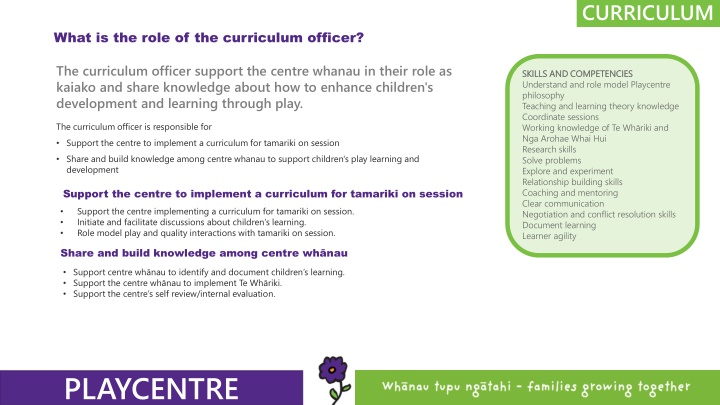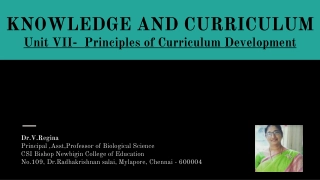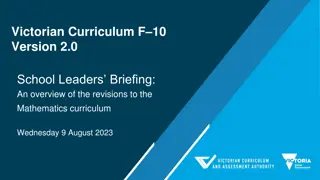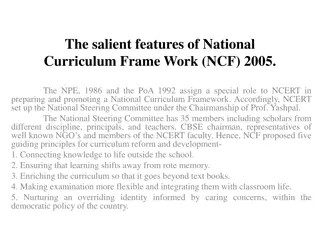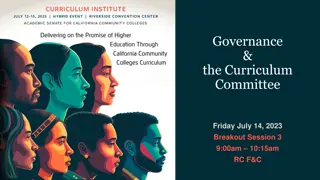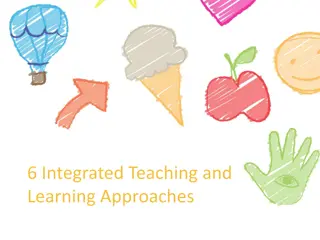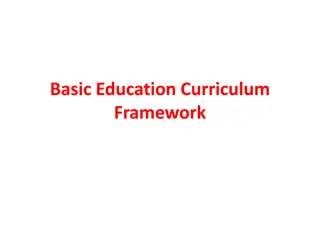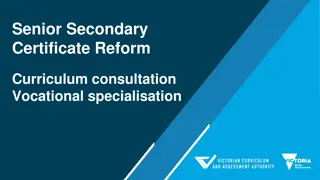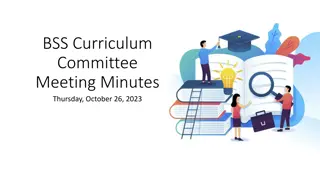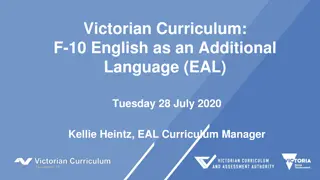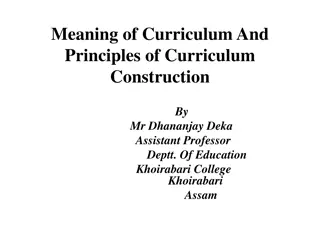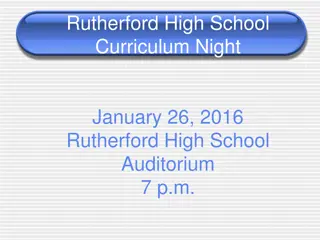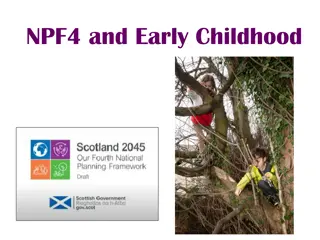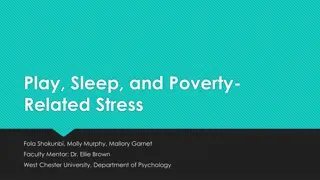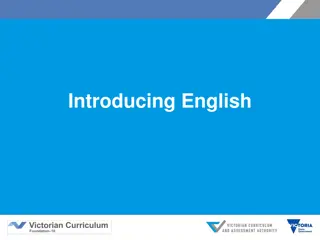Enhancing Children's Learning Through Play in Playcentre Curriculum
Curriculum officers at the Playcentre play a crucial role in supporting the center's whānau as kaiako to enhance children's development through play. They share knowledge, model playcenter philosophy, and facilitate learning conversations. The assessment process involves recognizing learning, documenting it through various means, and revisiting to improve the support given to children's learning goals.
Uploaded on Jul 29, 2024 | 1 Views
Download Presentation

Please find below an Image/Link to download the presentation.
The content on the website is provided AS IS for your information and personal use only. It may not be sold, licensed, or shared on other websites without obtaining consent from the author.If you encounter any issues during the download, it is possible that the publisher has removed the file from their server.
You are allowed to download the files provided on this website for personal or commercial use, subject to the condition that they are used lawfully. All files are the property of their respective owners.
The content on the website is provided AS IS for your information and personal use only. It may not be sold, licensed, or shared on other websites without obtaining consent from the author.
E N D
Presentation Transcript
CURRICULUM What is the role of the curriculum officer? The curriculum officer support the centre whanau in their role as kaiako and share knowledge about how to enhance children's development and learning through play. SKILLS AND COMPETENCIES SKILLS AND COMPETENCIES Understand and role model Playcentre philosophy Teaching and learning theory knowledge Coordinate sessions Working knowledge of Te Wh riki and Nga Arohae Whai Hui Research skills Solve problems Explore and experiment Relationship building skills Coaching and mentoring Clear communication Negotiation and conflict resolution skills Document learning Learner agility The curriculum officer is responsible for Support the centre to implement a curriculum for tamariki on session Share and build knowledge among centre whanau to support children's play learning and development Support the centre to implement a curriculum for tamariki on session Support the centre implementing a curriculum for tamariki on session. Initiate and facilitate discussions about children s learning. Role model play and quality interactions with tamariki on session. Share and build knowledge among centre wh nau Support centre wh nau to identify and document children s learning. Support the centre wh nau to implement Te Wh riki. Support the centre s self review/internal evaluation. PLAYCENTRE
ASSESSMENT IN PLAYCENTRE Every session we will notice many things Every session we will notice many things Some of what we notice we will recognise as learning Some of what we notice we will recognise as learning Learning conversations Learning conversations Kaiako responsibilities Kaiako responsibilities Some of what we recognise as learning Some of what we recognise as learning we will respond to we will respond to Some of the learning we Some of the learning we responded to we will revisit responded to we will revisit Some of the learning Some of the learning we revisit we will we revisit we will document document Documentatio Photos, Learning Stories, Photos, Learning Stories, videos, learner maps, videos, learner maps, profile books, profile books, transcripts, artefacts transcripts, artefacts n
CURRICULUM 2 recognise make sense of their learning goals 1 3 notice observe children s play interests Assessment and curriculum design in Playcentre respond extend children s play 4 5 record make children s learning journey visible revisit how effectively were the learning goals supported PLAYCENTRE
CURRICULUM Dispositions and working theories Relationships 1 Schemas and patterns of play Interests, passions and fascinations notice What have we noticed about the child? Children s goals and learning needs Knowledge and skills PLAYCENTRE
CURRICULUM Multiple perspectives 2 Formal and informal learning conversations On session Online Hui recognise What does it tell us about this child? Learner maps Purpose of play PLAYCENTRE
CURRICULUM Invitations to play and rich learning environment Islands of interest and learning inquiries Emergent curriculum 3 respond extend children s play Kaiako teaching strategies Quality interactions Children s agency PLAYCENTRE
CURRICULUM Anecdotal records/magic moments Profile books 4 Photos record make children s learning journey visible Learner maps Learning stories Videos PLAYCENTRE
CURRICULUM 5 revisit how effectively were the learning goals supported Continue to offer play and learning experiences Reflect on children s learning PLAYCENTRE
CURRICULUM Documentation & Assessment are not the same thing ASSESSMENT ASSESSMENT Assessment is the process of seeing and gathering a variety of evidence in everyday practice, and analysing and using that evidence to increase learning opportunities for children. We have come to know this as noticing, recognising, and responding. Assessment makes valued learning visible. Kaiako use assessment to find out about what children know and can do, what interests them, how they are progressing, what new learning opportunities are presented and where additional support may be required. Te Whariki, page 63 Documentation is simply a record of some of that assessment activity, used to inform kaiako understanding and action. PLAYCENTRE
CURRICULUM Dispositions and working theories Formal and informal conversations Credit based assessment Grow islands of interest Reflections Extend emergent interests Make the learning visible Evaluation book Purple is what we want to achieve with assessment [our purpose]. It answers the question Why do we assess? Green how we achieve it. How do we create a mana-enhancing learning environment? Orange is our tools and strategies. There is more than one way to do this and needs to be open for review [What we do] Centre hui Revisit play and learning with tamariki Write magic moments Gather multiple perspectives Inquiries Quality interactions To support tamariki to grow up as competent and confident learners and communicators, healthy in mind, body, Write Learning Stories Rich learning environments Cooperative and collaborative and spirit, secure in their sense of belonging and in the knowledge that they make a valued contribution to society. progress over time Grow children s strengths and interests Transcripts Capture learning Possible lines of direction [PLODS] Photo stories Videos Online tools Understand learning and development through a holistic lens Photos Work samples Wall displays Individual learning plans Children s voice Observations Photo stories Children s books Learner maps Profile books PLAYCENTRE
CURRICULUM 1. How do we understand learning through a holistic lens? 2. How do we gather multiple perspectives on children s learning? 3. How do we make learning visible at Playcentre? 4. How do we capture progress over time? 5. How do we grow children s strengths and interests? 6. How do we revisit play and learning with tamariki? PLAYCENTRE
Manageable Affect children s learning Sharing tool between adults Documentation is used to plan sessions Manageable systems Adults enjoy documentation User friendly and accessible to everyone Flexible and open to new ideas reflect and review systems New members are able to contribute from the beginning Systems meet the needs of the families at the centre Clear systems Documentation is not used for assessment Focus on compliance and quantity Prescribed systems are used Lack meaning Meaningful ASSESSMENT PRACTICES ASSESSMENT PRACTICES Either too much or too little Not used for assessment Lack of cooperative assessment practices One or two people are responsible or too high expectations from members Focus on compliance and quantity Prescribed systems are used Lacks a process to up skill new members Complaints about it being too much work Quality assessment practices High workload & time consuming High stress levels High expectations from members Systems are complex and require high level of knowledge Inflexible to meet the needs of the community The system relies on a core group of people to work. Unmanageable
CURRICULUM Te Wh riki online https://tewhariki.tki.org.nz/en/te-whariki-foundations/principles-strands-goals-and- learning-outcomes/ Principles, strands, learning outcomes PLAYCENTRE
